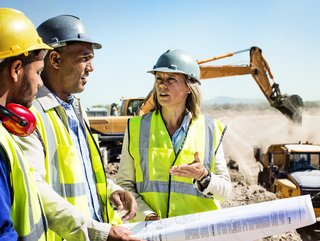Top 10 sexual harassment issues in Australia mining

The Western Australia Legislative Assembly has lifted the lid on sexual harassment in the mining industry, publishing a 178-page report full of wide-ranging findings and recommendations.
The landmark report described the harassment of women as "appalling" and "generally accepted or overlooked", resulting from the abuse of positions of power, serious breaches of codes of conduct and culture of cover-up.
Now it is up to the mining industry and Government to seriously address the recommendations. "It is time to come together to make the cultural, system and legislative changes required to equip, prepare and educate the workforce," it states. "To move the culture of mining workplaces to one where understanding, preventing and appropriately dealing with incidents of workplace sexual harassment is the practiced norm."
Here are 10 key issues identified in the report.
10: Tackling poor culture and alcohol
There are many aspects to ‘poor culture’ but the report found several key issues. First, there was a sense of accepting ‘the way we do things here’ that permitted behaviour that would not be tolerated elsewhere - and that misuse of alcohol was rife.
Mining is a particularly hierarchical industry, and this has enabled appalling behaviour to continue, up to and including managers and supervisors.
09: Enhancing reporting structures
Rather than a mature system, the report found that there is a very poor set of information across the board, which is incomplete, unclear and inconsistent.
Companies do not have a good understanding of the problem, and the State, through its key regulators, has a similar issue. Companies relied on internal reporting systems, but people in those companies do not trust them. They underreport their issues, and do not believe they will be taken seriously if they do report.
08: Improving regulatory framework
There is much work remaining to bring the same level of guidance, regulation, and practice to matters of sexual harassment as those that already exist for matters of more traditional workplace safety.
Part of this will require the regulator increasing its expertise in monitoring and investigating cases of sexual harassment, and in providing consistent and comprehensive guidance to workplaces, the report states.
However it also recognises that while regulators can influence and respond to activity, companies and the industry have the principal responsibility for providing safe and supportive workplaces.
07: Tackling historical abuses
The Government should consider establishing a forum to hear, document and acknowledge the experiences of victims of historical workplace sexual harassment. Part of this process could include exploring opportunities for redress, such as formal apologies from companies and/or perpetrators and appropriate compensation.
06: Addressing casual sexism
The stories recorded cover a range of behaviour, from "casual and almost unconscious sexism and misogyny" to calculated and sustained harassment and assault.
The report takes "no pleasure in detailing the kinds of behaviour displayed across the industry" but consider that outlining the problem in some detail is important to making known the breadth of unacceptable behaviour.
"In turn, we believe that doing so will give strength to wide-ranging recommendations to help minimise the likelihood of this situation continuing," it states.
05: Focusing on employment and legalities
Mining and other resources companies need to ensure that there are serious repercussions, including dismissal, for any person who has attempted to seek sexual favours for advantage and that all proper legal actions will be taken against them.
Even when people are found to have behaved unacceptably, there has been a practice of ‘moving them on’ rather than dismissing them, allowing them to continue in the industry.
04: Correcting gender imbalance
A gender imbalance in an organisation means that women are more likely to face disproportionate challenges to counter negative stereotypes or effectively deter or resist harassment. In fact, women working in male-dominated industries say they have to work twice as hard to receive half as much respect.
National employment statistics show that 132,800 people were employed in mining and resources in WA in November 2021 and only 19.1% were women.
03: Building integrated workplace communities
Camp practices such as ‘motelling’, where workers change dongas at each swing, dissolve the community fabric that exists with more permanent arrangements and undermine camp cohesiveness.
FIFO camps should be run as the communities they are and having continuity of neighbours is more likely to result in mutually supportive support camp relationships.
02: Focus on labour hire rates
The mining and resources sector must actively work to reduce the risks which are exacerbated by high rates of labour-hire and sub-contracting. To ensure sexual harassment is addressed, safety management plans should:
- consider the appropriate proportion of labour-hire and contracted workforce;
- review monitoring and information sharing arrangements with all levels of contract partners;
- and establish clear requirements and guidelines for all contractors, which directly address issues of sexual harassment.
01: Prevent and respond
Successful and meaningful change must be: victim-centred; practical; adaptable for businesses of all sizes; and designed to minimise harm to workers, and the future focus should be on prevention and response.
Preventing
- Leadership – developing and displaying leadership to contribute to improved culture.
- Risk assessment and transparency – identifying and assessing risk, learning from the past, to mitigate those risks and improve understanding.
- Culture – building cultures of trust and respect, including policies and HR practices to set culture.
- Knowledge – including education and training to show leadership commitment and develop collective understanding of expected behaviours and processes.
Response
- Support – prioritising worker wellbeing; supporting people before and after they report, and during any formal processes.
- Reporting – increasing options for workers to report; making new ways for employers to respond without formal investigations; making investigations victim-centric.
- Measuring – collecting data at workplace and industry level to better understand scope and nature of problem; including assessing the effectiveness of responses.






